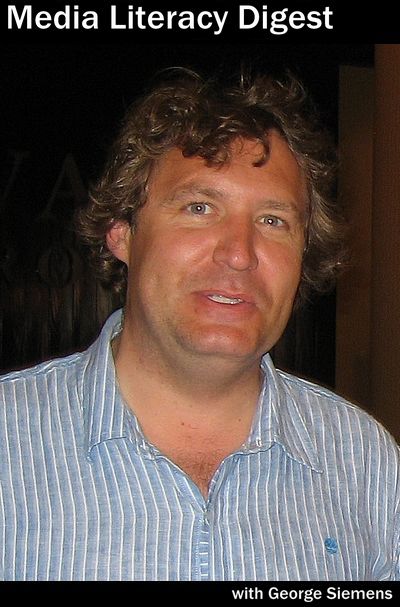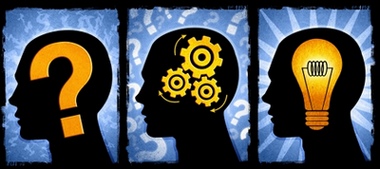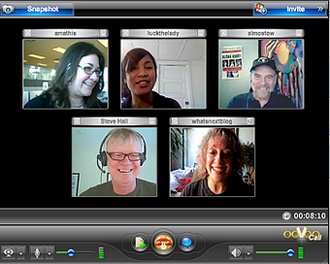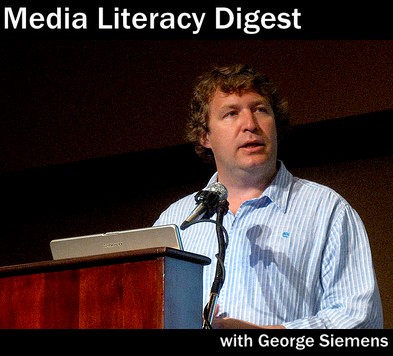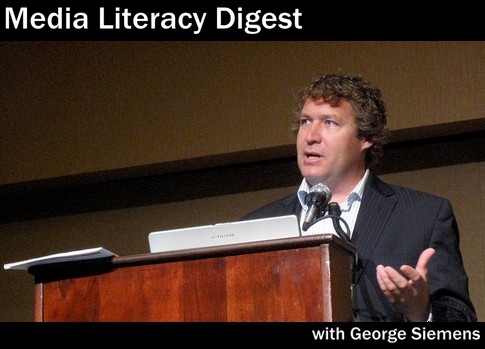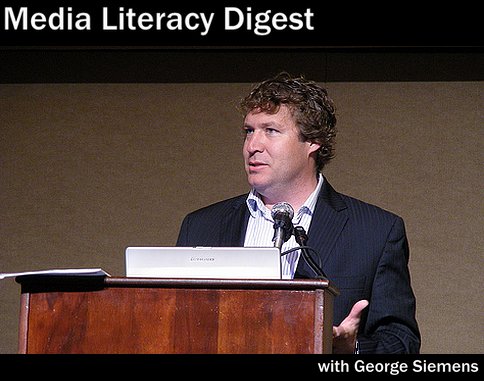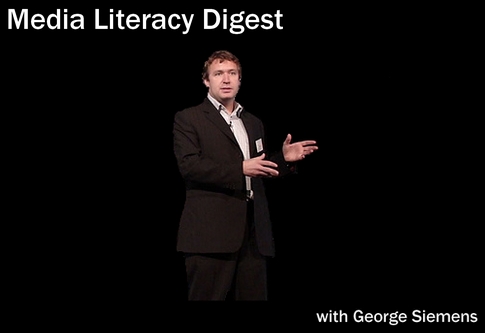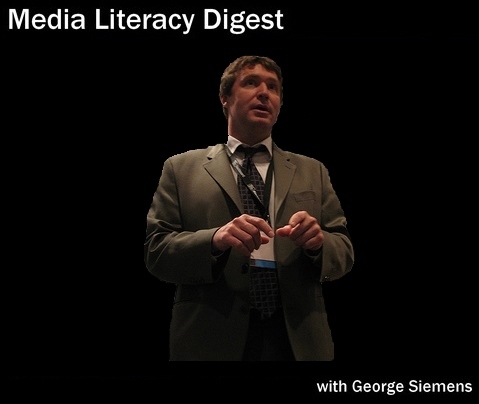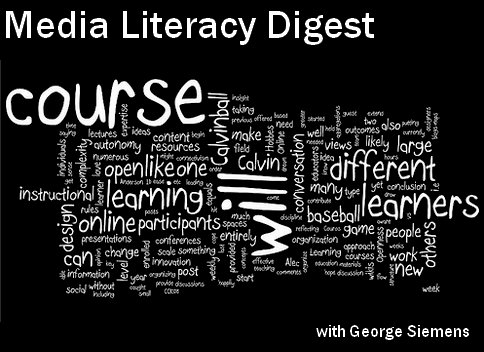by Geoff Olson 
photo montaqe: Peter Sircom Bromley
A FRIEND recently told me how she loved singing songs as a child at summer camp. “Most of them were goofy but they were part of the camp experience,” she added. When she returned as a director in 1987, my friend discovered most of the old tunes had disappeared from her childhood haunt. The only song the kids could sing was the theme from The Brady Bunch. The camp closed a few years later. A similar tale of cultural memory gone missing was recounted in 2004 in the Globe and Mail: a teacher conducting a session on media literacy at an upscale school in Toronto had her young students form groups and write a list of advertising jingles they were familiar with. “A jingle train is started, with groups each singing a jingle as it snakes its way around the classroom,” wrote reporter Hal Niedzviecki, who was “struck by the incredible number of jingles these theoretically more refined girls have lodged in their minds.” Children still occasionally sing nursery songs like Ring Around the Rosieand London Bridge Is Falling Down, but isn’t a theme song from a seventies sitcom like The Brady Bunch more in keeping with the times than tunes dating back to the Black Death and a Viking attack on England in the 11th century? Does it really matter what kids sing, as long as they’re singing? And isn’t all this just part of a culture moving on, which it always has, evolving new ways of doing and being over time? Perhaps. But in a time in which celebrity is another word for identity, and the camera’s eye is like a mother’s gaze, the young have entered into a strange, new Through-the Looking-Glass relationship with their media-mediated world. Their deepest desires and fears, co-opted by the world of public relations and advertising, are offered back to them with price tags attached. “The irony is that while the quantity of information doubles every few months, people generally seem to be less informed and increasingly apathetic and disenchanted,” writes Vancouver-based educator Brent Cameron in his 2006 book SelfDesign: Nurturing Genius Through Natural Learning. “Never before have we had such amazing ways of delivering information through television, books, photographs, graphics, computers, video, multimedia, and the internet. Yet so many children are bored and have become less and less motivated to learn about and understand the world around them,” Cameron states in his book. Although Carl Gustav Jung did not live long enough to witness the late 20th century assault on the physical and mental environment, the Swiss psychologist can offer some help in understanding what’s happening today. In Jung’s system, the deepest layer of the psyche is what he called the “collective unconscious.” While Freud viewed the sub-conscious as the part of the mind where unacceptable sexual impulses are pushed down, Jung saw the un-conscious as the part of the mind from which ancient images push up. In various, traditional myths from around the world, we find common archetypes, such as the hero, the universal mother and the trickster. Jung believed the recurring themes in these myths weren’t solely due to the cultural diffusion of invasion, trade or travel. The archetypes of the collective unconscious are dreamlike, symbolic figures representing universal human experience. They are expressive of the energies of the mind-body complex at their deepest levels. But what if the mental environment of media – the ads, television shows and movies, the chat lines and the twittering – penetrates into the aquifer of self, our deepest levels of being? Is it possible that today the deeper levels of our psyches are informed – or deformed – by this onslaught of information? Are we displacing the individual dream world with the dream world of media? I define this mass dream as the ‘Collective Unconscious 2.0’, a collective enterprise of advertisers, marketers, public relations experts, scriptwriters, bloggers, computer programmers, news editors, publishers and all the immense creative talent from Hollywood and beyond. This world of immersive fantasy and rubbery fact contains both darkness and light, beauty and ugliness, and every imaginable simulated shade of human experience. And it is an entirely novel phenomenon in human history. Jung’s collective unconscious is the dreamtime of Homo sapiens. ‘Collective Unconscious 2.0’ is the dreamtime of late-era hypercapitalism. The energies that inform Jung’s collective unconscious are for the most part biological: instinctual drives of fear, hunger and sex (along with the drive for psychic wholeness). The energies that inform the ‘Collective Unconscious 2.0’ are more abstract, related to the movement of electronic capital and the maximization of profit to shareholders. In his 1999 book Life the Movie: How Entertainment Conquered Reality, New Yorker contributor Neal Gabler described a bizarre feedback loop between mainstream films and the culture they draw upon. The author insisted that the domination of entertainment in American culture is so total citizens have internalized the narratives of films and television into their sense of identity. “Over the years our movie going and television watching has been impregnating the American consciousness with the contentions and esthetics of entertainment, until we have become performers ourselves, performing our own lives out of the shards of movies. One might even think of American life, including quotidian American life, as a vast production in which virtually every object is a prop, every space is a set, every person is an actor and every experience is a scene in a continuing narrative.” Gabler wrote this prescient passage years before American Idol and the instant celebrity of reality television. He also completed Life the Movieshortly before the tragedy at Columbine High School in the US, an event that turned out to be the first massacre of the digital age. (During the shooting, several students in hiding communicated with the outside world by cell phones, but quickly realized the killers themselves might be watching the school monitors and could discover their hiding places.) After the tragedy, the surviving students grieved for days – not privately with their friends, but in front of the school, with the television cameras present. The Columbine kids acted out in a festival of telegenic grief, Gabler wrote later. When the gaze of the all-seeing, identity-creating eye fell on them, they cried as if on cue. Some educators and psychologists fear that North American adults and youth are incrementally losing their ability to interact in a meaningful, deep way with others. “Interiority,” which theologian Paul Tillich described as imaginative capacity that allows us to read ourselves into others, grows from face-to-face, real-world encounters. For the young, interiority isn’t something that comes automatically through a cursor, keyboard or remote. In his Atlantic Monthly essay The Numbing of the American Mind, Thomas de Zengotita explains that we are being rewired in subtle yet deep ways by the constant barrage of media from all sources. This is why a couple of weeks out in nature doesn’t cut it anymore for some adults, he says. “You will virtualize everything you encounter anyway, all by yourself.” Having been raised on a steady diet of nature shows, “you won’t see wolves, you’ll see wolves. You’ll be murmuring to yourself, at some level, ‘Wow, look, a real wolf, not in a cage, not on TV, I can’t believe it.’” “Natural things have become their own icons,” de Zengotita writes. The author believes this process results in a kind of numbing. Using the new Times Square in New York as an example, de Zengotita observes that the entire space is “firing message modules, straight for your gonads, your taste buds, your vanities, your fears.” “These modules seek to penetrate, but in a passing way. A second of your attention is all they ask. Nothing is firing that rends or cuts. It’s a massage, really, if you just go with it. And why not? Some of the most talented people on the planet have devoted their lives to creating this psychic sauna, just for you.” Ersatz environments and colourful advertisements have been with us since the fifties, de Zengotita adds, but the multimedia blitz we experience now represents a whole new level of persuasion. “Saying that it’s just more of what we had before is like saying a hurricane is just more breeze.” It’s arguable that, in earlier generations, people related to one another more spontaneously and with greater affect – and still do, in places around the world that aren’t bombarded with 24-hour media penetration. Thousands of years ago, there was only one channel – the nature channel – and the source for high-bandwidth, real-time infotainment was other people. We were our own programming, and our world of rocks, trees, seas and other creatures provided the narrative bricks for the dreaming mind. In the daylight hours, after the chores were done, our ancestors couldn’t sit back and absorb their entertainment passively. Song, story and dance engaged the body and mind and belonged to no one but the community of participants. Interactivity wasn’t optional; it was mandatory. Thousands of years ago, human sleep cycles were circumscribed by the rising and setting of the sun. Today, many adults and even children watch late-night television or surf the web alone, during hours when their ancestors would have been in the early stages of REM sleep. Mood-altering drugs like SSRI antidepressants also result in a reduction in the overall amount of REM sleep over the night and the delay of the first entry into REM sleep. Electronic media and mood-altering drugs are, in effect, part of a vast, uncontrolled experiment on the human psyche. We are no longer dreaming our own dreams as much as those of corporate monopolies. Today’s mass dream, split from the organic foundation of the world and cobbled together from shards of television shows, newspaper and magazine articles, advertisements, films, ad jingles, ringtones – the whole mad fantasy of what’s hip, what’s not, who’s in, who’s out and the international villain du jour – is the raw stuff of the ‘Collective Unconscious 2.0’. One of Marshall McLuhan’s most important insights is that the electronic media space we inhabit is now like the air around us in its intimacy. It’s a thin atmosphere, depending on simulations of the real and simulations of those simulations – as in the superhero cartoon that becomes a film franchise that becomes a video game. This infinite regress results in a strange feeling of disconnection and unreality for the citizen/consumer. De Zengotita’s wolf – that can no longer be seen with pristine eyes – is one example. It all makes for a strange hall of mirrors, in which politics, celebrities and the news collapse into what De Zenogtita calls ‘The Blob,’ hearkening back to the fifties sci-fi film of the same name, about a gooey, amoeboid monster that absorbs everything in its path. For his part, the French poststructuralist philosopher Jean Baudrillard called this simulated cultural space “hyperreality,” which he defined as a peculiarly American invention. I never totally understood hyperreality until shortly after the end of the first Gulf War. I was in a hotel room in Seattle, watching Henry Kissinger doing the weather on Good Morning America – something, he informed the hosts, “he had always wanted to do” – when I switched over to another channel and saw General Norman Schwarzkopf marching in a victory parade with Mickey Mouse. I recall the four-star general and Disney rat singing together in a downfall of confetti. A former Nixon advisor and accused war criminal pretending he’s a weather man. A real general celebrating a made-for-TV war with a fake mouse. Both within a few seconds of each other, courtesy a TV remote. Whether you call this sort of thing an example of hyperreality, ‘The Blob,’ or the CU 2.0, there’s no denying it’s as disconnected and random as a schizophrenic’s journal entry. It’s the way we live now. My experience in that Seattle hotel room took place six years before the epochal police pursuit of OJ Simpson in a white Ford Bronco, the pivotal moment when the line between news and entertainment collapsed entirely. Half a decade later when Yale’s most famous C-minus student entered the White House, hyperreality was no longer the obscure domain of goateed professors and their grad students. Although most of us didn’t know it by name, we were becoming used to the manufacture of the intensely strange into the nauseatingly familiar. By early July of this year, hardly anyone blinked when the media turned the funeral of a surgically altered singer and accused pedophile into a high-production festival in Los Angeles: “a variety show with a coffin” as writer Chris Hedges called it. As Gabler wrote in Life the Movie, mass entertainment has become a “cultural Ebola virus, invading organisms no one would ever have imagined could provide amusement” – including courtroom trials, resource wars and public funerals. “You won’t believe how bad television is going to be in 10 years,” writer Robert Bly noted in a prophetic interview in 2004. “You’re literally going to have to protect your children from it.” Arguably, Bly’s estimated time of arrival was a bit conservative. You can hardly watch the downward trajectory of the mass media’s offerings without thinking that some vast spiritual problem is being worked out. As the quality of Hollywood films declines further into gross-out comedies, sequels and superhero spin-offs, and the primetime offerings on network television plumb ever deeper levels of the abyss, with celebrity piffle dominating the cable news channels, one thinks of Jung’s concept of the “shadow.” He defined this as all of the darker feelings and impulses we repress in order to be able to believe the best of ourselves. Jung held that whatever negative, psychic issues were being suppressed, they needed to be brought to consciousness and faced before an individual could become psychically whole. Films like Training Day, Hostel and the Saw franchise aren’t just violent; they positively revel in a pornography of psychic and bodily destruction. There is a winding, psychic thread from these productions and television shows like 24 (with a plot that hinged on the utility of torturing terrorists) to Abu Ghraib, Guantanamo Bay and the “black sites” spread across the world. As the Empire expands, demanding that nations accept freedom at the barrel of a gun, we watch as all the unacknowledged ugliness of crony capitalism vomits from the media spillways. You can even hear it in the breathless excitement of embedded journalists describing the latest attack of a predator drone on “terrorists” who are as gunsight-ghostly as the avatars in a videogame. This is the shadow side of the ‘Collective Unconscious 2.0.’ Mainstream media culture currently has all the signs of full-blown psychosis. This is analogous to Jung’s shadow. Confronting the shadow is unpleasant on a personal level, but healing cannot be effected without being confronted with the truth – and as folk wisdom has it, the truth hurts. What is positive about this process is that we’re being forced to confront the very worst in the imaginal output of our great, untethered, free market economy. But we must not forget that the Internet is also part of the ‘CU 2.0.’ And as the mainstream media becomes increasingly removed from reality, the Internet has picked up the task of observing what Freud called the “reality principle,” or if you prefer, a “reality check,” even while offering endless distractions of its own. (Novelist George Orwell feared the truth would be concealed from us while novelist Aldous Huxley feared the truth would be drowned in a sea of irrelevance.) “Imagination is more powerful than knowledge,” Einstein once said. Any idea and image expressed in the ‘CU 2.0’ began somewhere in some individual mind. Its success in being turned into a news broadcast, jingle, billboard, video game, film, television show or movie depended largely on market forces – but with the advent of the Internet, things go “viral” very quickly now and the mass manufacture of consent is becoming harder to achieve. There is ugliness in the mass dream we’ve weaved, but also beauty, and every possible representation of human good and evil, truth and falsehood, creativity and amateurism. Right now, the ugliness appears to be ascendant, but this may be necessary to purge western civilization of its lies. Even in the mainstream media’s most successful offerings, we can occasionally see portents of hope. The first Matrix film and even the film versions of Harry Potter communicate an essential message: that the world is a more magical place than its humdrum surface suggests, and it can be shaped by our intents. The final guarantor that something is impossible is the belief that it is so. We are, ultimately, the stories we tell each other of our past, present and future. We become what we seek. It’s up to us to rule the imagination or leave it in the hands of a select few to shape the future of the mass dream. As Buckminster Fuller once said, “You never change things by fighting the existing reality. To change something, build a new model that makes the existing model obsolete.” As the terrible images and sounds pour from the ‘Collective Unconscious 2.0,’ let’s pray we’ll be able to tell more stories we want to hear, create more pictures we want to see, and sing more songs we want to sing – the work that resonates with our deeper, truer selves.
www.geoffolson.com | 

